
漢德百科全書 | 汉德百科全书
 Fußball-Europameisterschaft 2020
Fußball-Europameisterschaft 2020
 FIFA Fussball-Weltmeisterschaft 2014
FIFA Fussball-Weltmeisterschaft 2014
 FIFA Fussball-Weltmeisterschaft 2022
FIFA Fussball-Weltmeisterschaft 2022
 FIFA Fussball-Weltmeisterschaft 2022
FIFA Fussball-Weltmeisterschaft 2022
 Gruppe A
Gruppe A
 FIFA Weltmeister Favoriten Teams *
FIFA Weltmeister Favoriten Teams *
 Fußball-Europameisterschaft 2020
Fußball-Europameisterschaft 2020
 Gruppe C
Gruppe C

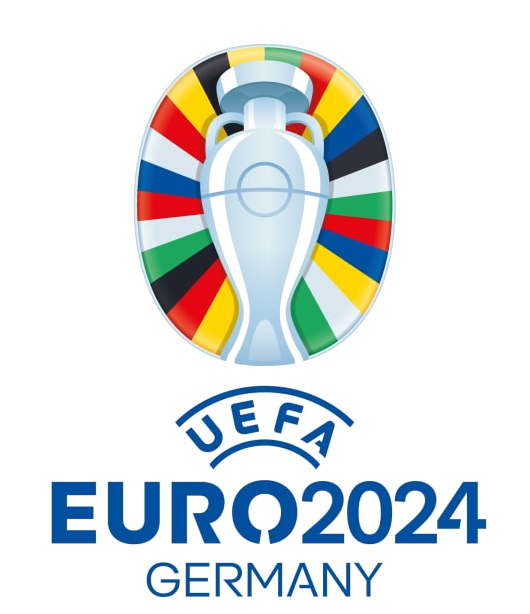 Fußball-Europameisterschaft 2024
Fußball-Europameisterschaft 2024
 Louis van Gaal
Louis van Gaal
 Niederlande
Niederlande

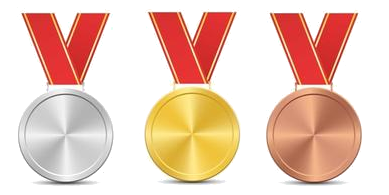 Sport
Sport
 (F)Fußball-Europameisterschaft
(F)Fußball-Europameisterschaft

 Sport
Sport
 (F)UEFA Nations League
(F)UEFA Nations League
 UEFA Nations League
UEFA Nations League
 UEFA Nations League A - Group 1
UEFA Nations League A - Group 1

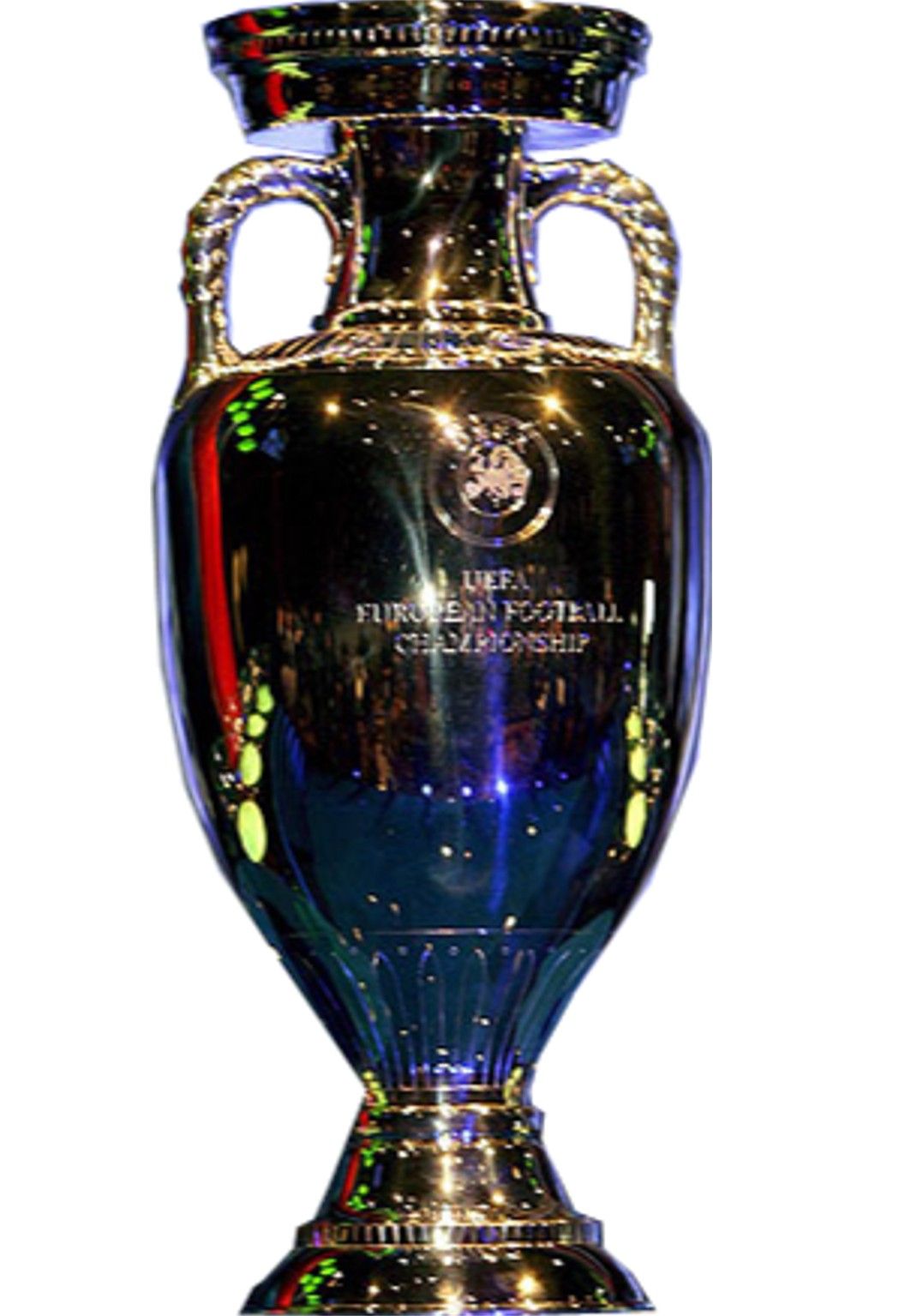


 Fußball-Europameisterschaft 2020
Fußball-Europameisterschaft 2020
 Gruppe A
Gruppe A
 Montenegro
Montenegro

 Sport
Sport
 (F)UEFA Nations League
(F)UEFA Nations League
 UEFA Nations League
UEFA Nations League
 UEFA Nations League C - Group 4
UEFA Nations League C - Group 4

 Fußball-Europameisterschaft 2016
Fußball-Europameisterschaft 2016
 Fußball-Europameisterschaft 2020
Fußball-Europameisterschaft 2020
 Gruppe A
Gruppe A

 Fußball-Europameisterschaft 2024
Fußball-Europameisterschaft 2024

 Sport
Sport
 (F)Fußball-Europameisterschaft
(F)Fußball-Europameisterschaft

 Sport
Sport
 (F)UEFA Nations League
(F)UEFA Nations League

 Sport
Sport
 (F)Fußball bei den Olympischen Spielen
(F)Fußball bei den Olympischen Spielen
 Tschechien
Tschechien
 UEFA Nations League
UEFA Nations League
 UEFA Nations League B - Group 1
UEFA Nations League B - Group 1



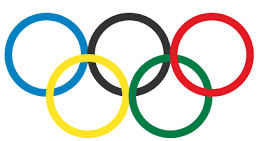 (1980 Tschechoslowakei)
(1980 Tschechoslowakei) Fußball-Europameisterschaft 2020
Fußball-Europameisterschaft 2020
 Gruppe A
Gruppe A
 Kosovo
Kosovo

 Sport
Sport
 (F)UEFA Nations League
(F)UEFA Nations League
 UEFA Nations League
UEFA Nations League
 UEFA Nations League D- Group 3
UEFA Nations League D- Group 3

 FIFA Fussball-Weltmeisterschaft 2014
FIFA Fussball-Weltmeisterschaft 2014
 FIFA Fussball-Weltmeisterschaft 2018
FIFA Fussball-Weltmeisterschaft 2018
 Gruppe-D
Gruppe-D
 FIFA Fussball-Weltmeisterschaft 2022
FIFA Fussball-Weltmeisterschaft 2022
 FIFA Fussball-Weltmeisterschaft 2022
FIFA Fussball-Weltmeisterschaft 2022
 Gruppe F
Gruppe F
 Fußball-Europameisterschaft 2016
Fußball-Europameisterschaft 2016
 Fußball-Europameisterschaft 2020
Fußball-Europameisterschaft 2020
 Gruppe E
Gruppe E

 Fußball-Europameisterschaft 2024
Fußball-Europameisterschaft 2024
 Kroatien
Kroatien

 Sport
Sport
 (F)UEFA Nations League
(F)UEFA Nations League
 UEFA Nations League
UEFA Nations League
 UEFA Nations League A - Group 4
UEFA Nations League A - Group 4

 Fußball-Europameisterschaft 2020
Fußball-Europameisterschaft 2020
 Gruppe G
Gruppe G
 Lettland
Lettland

 Sport
Sport
 (F)UEFA Nations League
(F)UEFA Nations League
 UEFA Nations League
UEFA Nations League
 UEFA Nations League D- Group 1
UEFA Nations League D- Group 1

 Fußball-Europameisterschaft 2020
Fußball-Europameisterschaft 2020
 Gruppe B
Gruppe B
 Litauen
Litauen

 Sport
Sport
 (F)UEFA Nations League
(F)UEFA Nations League
 UEFA Nations League
UEFA Nations League
 UEFA Nations League C - Group 4
UEFA Nations League C - Group 4

 Fußball-Europameisterschaft 2020
Fußball-Europameisterschaft 2020
 Gruppe J
Gruppe J
 Liechtenstein
Liechtenstein

 Sport
Sport
 (F)UEFA Nations League
(F)UEFA Nations League
 UEFA Nations League
UEFA Nations League
 UEFA Nations League D- Group 4
UEFA Nations League D- Group 4

 Fußball-Europameisterschaft 2020
Fußball-Europameisterschaft 2020
 Gruppe B
Gruppe B
 Luxemburg
Luxemburg

 Sport
Sport
 (F)UEFA Nations League
(F)UEFA Nations League
 UEFA Nations League
UEFA Nations League
 UEFA Nations League D- Group 2
UEFA Nations League D- Group 2


 Architektur
Architektur
 England
England
 Eurovision Song Contest,ESC
Eurovision Song Contest,ESC

 Finanz
Finanz
 ***Globales Finanzzentrum/Global Financial Center
***Globales Finanzzentrum/Global Financial Center
 Fußball-Europameisterschaft 2020
Fußball-Europameisterschaft 2020

 Geschichte
Geschichte
 N 2000 - 2100 nach Christus
N 2000 - 2100 nach Christus

 Geschichte
Geschichte
 M 1500 - 2000 nach Christus
M 1500 - 2000 nach Christus

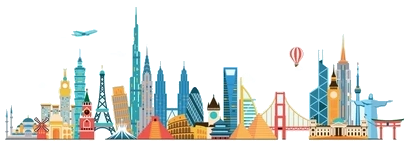 Internationale Städte
Internationale Städte
 ***Globale wirtschaftliche Wettbewerbsfähigkeit der Städte
***Globale wirtschaftliche Wettbewerbsfähigkeit der Städte
 ITU World Championship Series
ITU World Championship Series

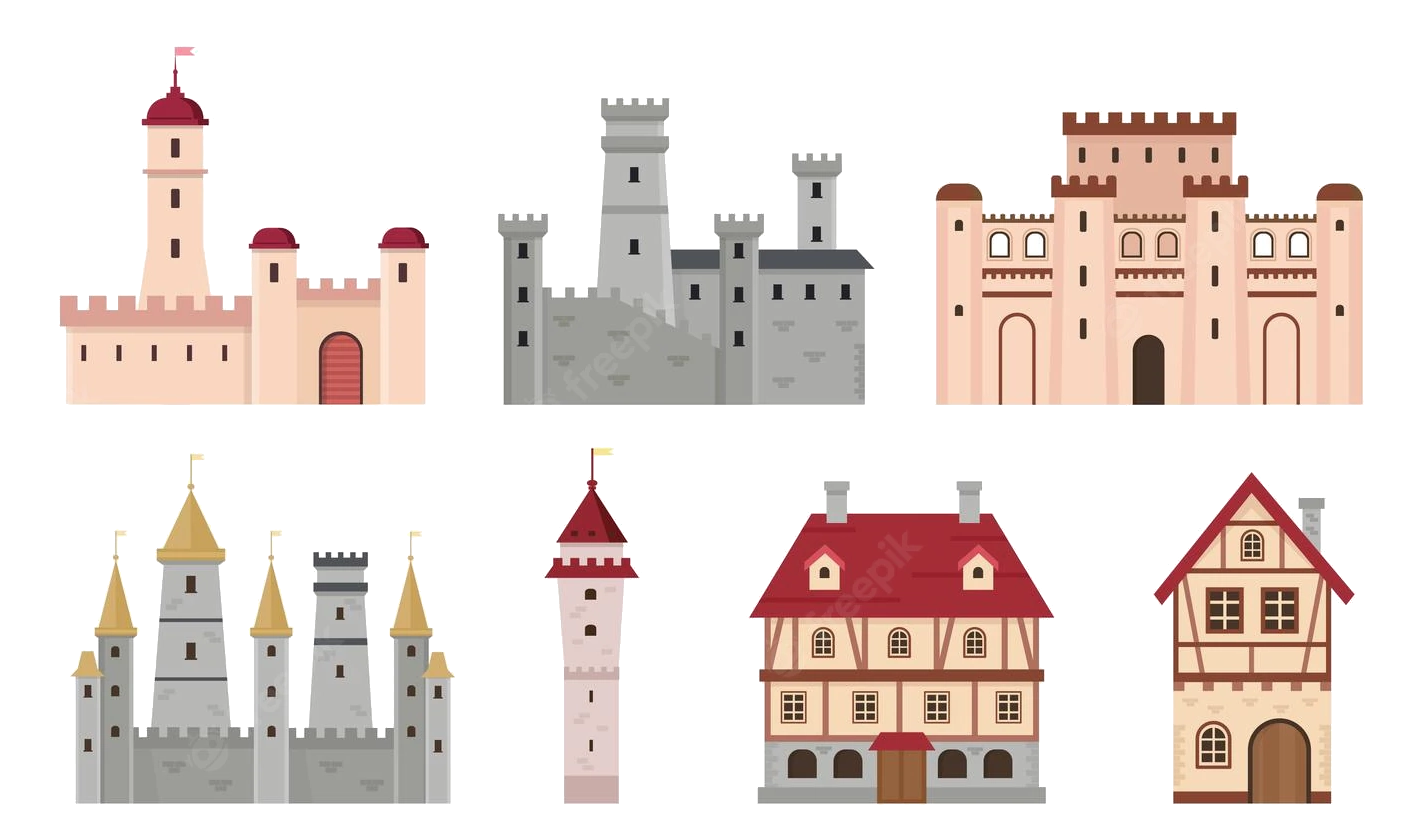 Mittelalterliche Städte in Europa
Mittelalterliche Städte in Europa
 Olympische Sommerspiele
Olympische Sommerspiele
 Olympische Sommerspiele 1908
Olympische Sommerspiele 1908
 Olympische Sommerspiele 1944
Olympische Sommerspiele 1944
 Olympische Sommerspiele 1948
Olympische Sommerspiele 1948
 Olympische Sommerspiele 2012
Olympische Sommerspiele 2012
 Seidenstraße
Seidenstraße

 Sport
Sport
 Triathlon
Triathlon
 Vereinigtes Königreich
Vereinigtes Königreich

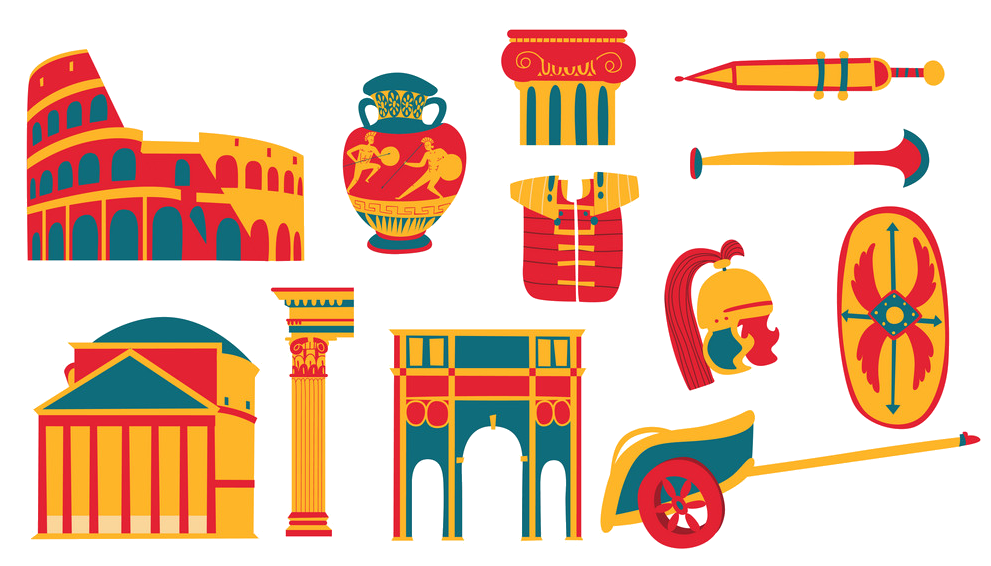 Von den Römern gegründete Städte
Von den Römern gegründete Städte

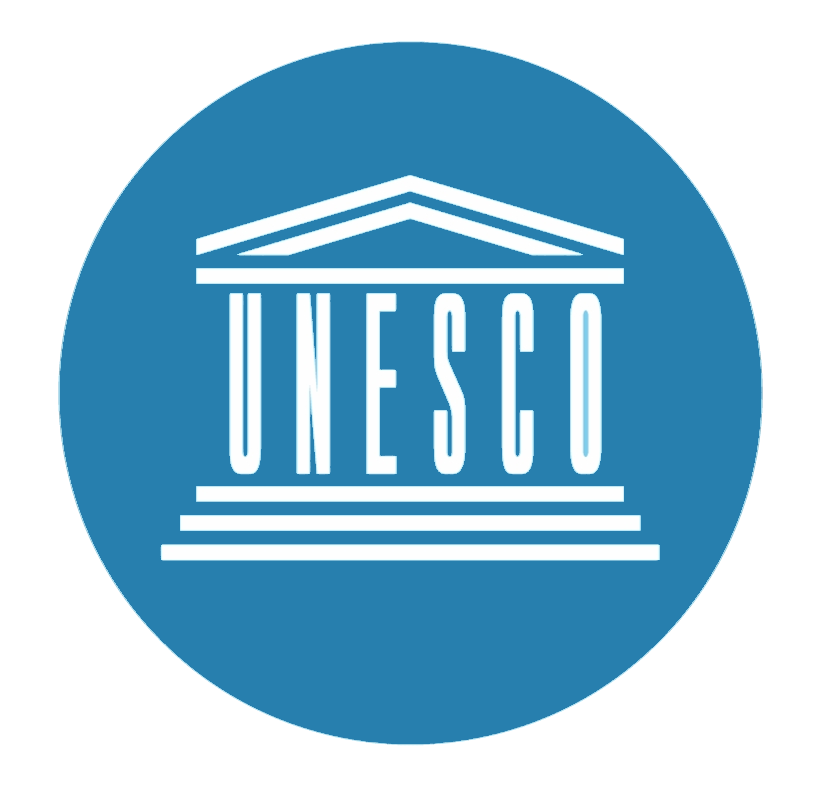 Weltkulturerbe
Weltkulturerbe

 Wichtiger Hafen
Wichtiger Hafen

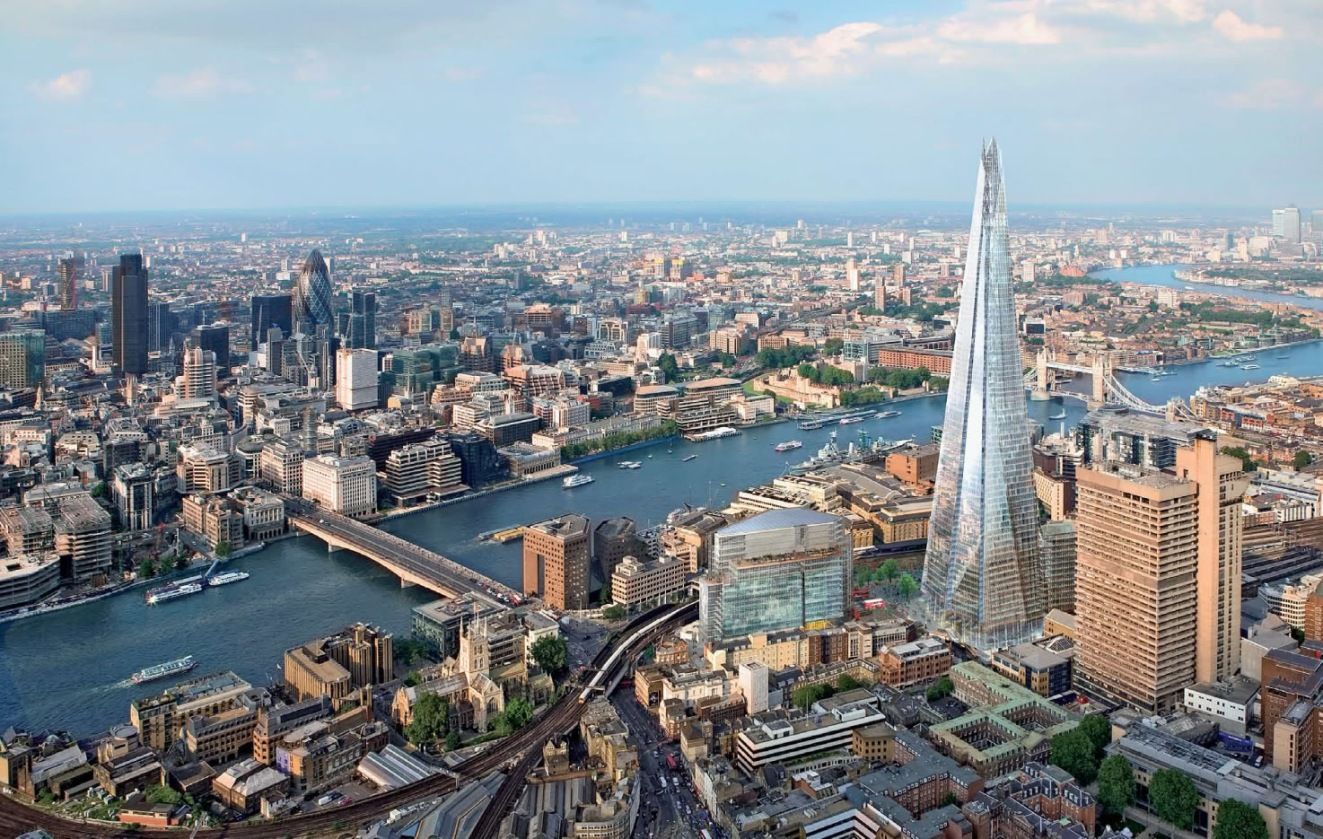
London (deutsche Aussprache [ˈlɔndɔn] oder gelegentlich [ˈlɔndən], englische Aussprache [ˈlʌndən]) ist zugleich die Hauptstadt des Vereinigten Königreiches und Englands. Die Stadt liegt an der Themse in Südostengland. Das heutige Verwaltungsgebiet mit 33 Stadtbezirken entstand im Jahr 1965 durch die Gründung von Greater London. Dort lebten 2022 rund 8,9 Millionen Menschen, davon rund 3,4 Millionen in den 13 Stadtbezirken Inner Londons.[2][4] In der gesamten Metropolregion London lebten 2019 knapp 14,4 Millionen Einwohner.[5]
Im Jahr 50 n. Chr. von den Römern als Londinium gegründet, wurde die Stadt nach der normannischen Eroberung 1066 Hauptstadt und Königssitz des Königreiches England. Bereits im Mittelalter entwickelte sich die Stadt zu einem bedeutenden internationalen Handelsplatz. Unter der Herrschaft von Elisabeth I. stieg ihre Bedeutung als Hafenstadt der Nordsee. Durch den Beginn der Industrialisierung im 18. Jahrhundert wuchs auch die Bevölkerung Londons, sodass es um 1800 eine der ersten Städte war, die mehr als eine Million Einwohner zählte. Bis 1900 versechsfachte sich die Bevölkerung, und London war bis zum Jahr 1925 die größte Stadt der Welt. Es entwickelte sich zu einem bedeutenden Zentrum der Technik und Industrie und wird bis heute zu den Weltstädten gerechnet.
London ist eines der bedeutendsten Kultur- und Handelszentren der Welt mit zahlreichen Universitäten, Hochschulen, Theatern und Museen. Mit einem BIP von 801,66 Mrd. € im Jahr 2017 ist London die größte städtische Wirtschaft Europas.[6] Die Stadt zählt außerdem neben New York City, Singapur und Hongkong zu den größten Finanzplätzen der Welt.[7] Historische Gebäude wie der Palace of Westminster oder Tower of London zählen zum UNESCO-Weltkulturerbe. Mit jährlich über 19 Millionen Touristen aus dem Ausland war London im Jahr 2016 nach Bangkok weltweit die zweitmeistbesuchte Stadt vor Paris.[8][9]
伦敦(英语:London;![]() i/ˈlʌndən/)[4]是英国首都,也是英国最大城市[5]以及其构成国英格兰的首府。位于泰晤士河流域,于公元50年由罗马人建立,取名为伦蒂尼恩,在此后两个世纪内为这一地区最重要的定居点之一[6]。伦敦的历史核心区——伦敦城仍旧维持其中世纪的界限,面积606.95平方英里(1,572.0平方千米),2019年人口为898.2万,为全英格兰最大的城市。自19世纪起,“伦敦”一称亦用于指称围绕这一核心区开发的周围地带[7]。这一城区集合自1965年起构成大伦敦行政区,由32个伦敦自治市加上伦敦城组成[8][9],由伦敦市长及伦敦议会管辖。[10][注 1]
i/ˈlʌndən/)[4]是英国首都,也是英国最大城市[5]以及其构成国英格兰的首府。位于泰晤士河流域,于公元50年由罗马人建立,取名为伦蒂尼恩,在此后两个世纪内为这一地区最重要的定居点之一[6]。伦敦的历史核心区——伦敦城仍旧维持其中世纪的界限,面积606.95平方英里(1,572.0平方千米),2019年人口为898.2万,为全英格兰最大的城市。自19世纪起,“伦敦”一称亦用于指称围绕这一核心区开发的周围地带[7]。这一城区集合自1965年起构成大伦敦行政区,由32个伦敦自治市加上伦敦城组成[8][9],由伦敦市长及伦敦议会管辖。[10][注 1]
伦敦亦是一个全球城市[11][12],[13]在文艺、商业、教育、娱乐、时尚、金融、健康、媒体、专业服务、研究与开发、旅游和交通方面都具有显著的地位[14][15][16][17],同时还是全球主要金融中心之一[18][19][20],根据计算,为全球国内生产总值第六大的都市区[注 2][21][22]。伦敦亦是全球文化首都之一[23][24][25][26],还是全球国际访客数量最多的城市[27],根据客流量计算则拥有全球最为繁忙的城市机场系统[28]。伦敦是全球领先投资地[29],吸引很多国际零售商来投资[30],个人净资产值高于其它城市[31]。伦敦拥有43所大学,其高等教育机构密集度在全欧洲最高[32]。2012年,伦敦成为史上首座三次举办现代夏季奥林匹克运动会的城市。[33]
伦敦的人口和文化十分多样,在大伦敦地区内使用的语言就超过300种[34]。这一区域2015年的官方统计人口为8,673,713[35],人口占全英国的12.5%[36]。在2020年英国脱离欧盟之前,伦敦的城市区为欧盟第二大,根据2011年普查其人口达到9,787,426,仅次于巴黎[37]。其都市区为欧洲最大,人口达13,614,409[注 3][38],而大伦敦政府则称伦敦都市区的总人口为2,100万[39]。1831年—1925年间,伦敦为世界最大的城市。[40]
有四项世界遗产位于伦敦,分别为:伦敦塔;邱园;威斯敏斯特宫、威斯敏斯特教堂和圣玛格丽特教堂;以及格林尼治历史区(其中的皇家天文台为本初子午线、0°经线和格林尼治标准时间所经之地)[41]。其他著名景点包括白金汉宫、伦敦眼、皮卡迪利圆环、圣保罗座堂、伦敦塔桥、特拉法加广场和碎片大厦。伦敦亦是诸多博物馆、画廊、图书馆、体育运动及其他文化机构的所在地,包括大英博物馆、国家美术馆、泰特现代艺术馆、大英图书馆以及40家西区剧院[42]。伦敦地铁是全球最古老的地下铁路网络。
ロンドン(英語: London [ˈlʌndən] (![]() 音声ファイル))はグレートブリテンおよび北アイルランド連合王国およびこれを構成するイングランドの首都。イギリスやヨーロッパ域内で最大の都市圏を形成している。ロンドンはテムズ川河畔に位置し、2,000年前のローマ帝国によるロンディニウム創建が都市の起源である[4]。ロンディニウム当時の街の中心部は、現在のシティ・オブ・ロンドン(シティ)に当たる地域にあった。シティの市街壁内の面積は約1平方マイルあり、中世以来その範囲はほぼ変わっていない。少なくとも19世紀以降、「ロンドン」の名称はシティの市街壁を越えて開発が進んだシティ周辺地域をも含めて用いられている[5]。ロンドンは市街地の大部分はコナベーションにより形成されている[6]。ロンドンを管轄するリージョンであるグレーター・ロンドンでは[7]、選挙で選出されたロンドン市長とロンドン議会により統治が行われている[8]。
音声ファイル))はグレートブリテンおよび北アイルランド連合王国およびこれを構成するイングランドの首都。イギリスやヨーロッパ域内で最大の都市圏を形成している。ロンドンはテムズ川河畔に位置し、2,000年前のローマ帝国によるロンディニウム創建が都市の起源である[4]。ロンディニウム当時の街の中心部は、現在のシティ・オブ・ロンドン(シティ)に当たる地域にあった。シティの市街壁内の面積は約1平方マイルあり、中世以来その範囲はほぼ変わっていない。少なくとも19世紀以降、「ロンドン」の名称はシティの市街壁を越えて開発が進んだシティ周辺地域をも含めて用いられている[5]。ロンドンは市街地の大部分はコナベーションにより形成されている[6]。ロンドンを管轄するリージョンであるグレーター・ロンドンでは[7]、選挙で選出されたロンドン市長とロンドン議会により統治が行われている[8]。
ロンドンは屈指の世界都市として、芸術、商業、教育、娯楽、ファッション、金融、ヘルスケア、メディア、専門サービス、調査開発、観光、交通といった広範囲にわたる分野において強い影響力がある[9]。また、ニューヨークと並び世界をリードする金融センターでもあり[10][11][12]、2009年時点の域内総生産は世界第5位で、欧州域内では最大である[13]。世界的な文化の中心でもある[14][15][16][17]。ロンドンは世界で最も来訪者の多い都市であり[18]、単一の都市圏としては世界で最も航空旅客数が多い[19]。欧州では最も高等教育機関が集積する都市であり、ロンドンには大学が43校ある[20]。2012年のロンドンオリンピック開催に伴い、1908年、1948年に次ぐ3度目のオリンピック開催となり、同一都市としては史上最多となる[21]。
ロンドンは文化的な多様性があり、300以上の言語が使われている[22]。2011年3月時点のロンドンの公式の人口は817万4,100人であり、欧州の市域人口では最大で[23][24]、イギリス国内の全人口の12.7%を占めている[25]。グレーター・ロンドンの都市的地域は、パリの都市的地域に次いで欧州域内で第2位となる8,278,251人の人口を有し[26]、ロンドンの都市圏の人口は1200万人[27]から1400万人[28]に達し、欧州域内では最大である。ロンドンは1831年から1925年にかけて、世界最大の人口を擁する都市であった[29]。2012年にマスターカードが公表した統計によると、ロンドンは世界で最も外国人旅行者が訪れる都市である[30]。
イギリスの首都とされているが、他国の多くの首都と同様、ロンドンの首都としての地位を明示した文書は存在しない[31]。
London (/ˈlʌndən/ ( listen) LUN-dən) is the capital and most populous city of England and the United Kingdom.[8][9] Standing on the River Thames in the south east of the island of Great Britain, London has been a major settlement for two millennia. It was founded by the Romans, who named it Londinium.[10] London's ancient core, the City of London, largely retains its 1.12-square-mile (2.9 km2) medieval boundaries. Since at least the 19th century, "London" has also referred to the metropolis around this core, historically split between Middlesex, Essex, Surrey, Kent and Hertfordshire,[11][12][13] which today largely makes up Greater London,[14][15][note 1] a region governed by the Mayor of London and the London Assembly.[16][note 2][17]
listen) LUN-dən) is the capital and most populous city of England and the United Kingdom.[8][9] Standing on the River Thames in the south east of the island of Great Britain, London has been a major settlement for two millennia. It was founded by the Romans, who named it Londinium.[10] London's ancient core, the City of London, largely retains its 1.12-square-mile (2.9 km2) medieval boundaries. Since at least the 19th century, "London" has also referred to the metropolis around this core, historically split between Middlesex, Essex, Surrey, Kent and Hertfordshire,[11][12][13] which today largely makes up Greater London,[14][15][note 1] a region governed by the Mayor of London and the London Assembly.[16][note 2][17]
London is one of the leading global cities[18][19] in the arts, commerce, education, entertainment, fashion, finance, healthcare, media, professional services, research and development, tourism and transportation.[20][21][22] It is the world's largest financial centre[23][24][25][26] and has the fifth or sixth largest metropolitan area GDP in the world.[note 3][27][28] London is often regarded as a world cultural capital.[29][30][31] It is the world's most-visited city as measured by international arrivals[32] and has the world's largest city airport system measured by passenger traffic.[33] It is the world's leading investment destination,[34][35][36][37] hosting more international retailers[38][39] and ultra high-net-worth individuals[40][41] than any other city. London's universities form the largest concentration of higher education institutes in Europe.[42] In 2012, London became the first city to have hosted the modern Summer Olympic Games three times.[43]
London has a diverse range of people and cultures, and more than 300 languages are spoken in the region.[44] Its estimated mid-2016 municipal population (corresponding to Greater London) was 8,787,892,[4] the largest of any city in the European Union[45] and accounting for 13.4% of the UK population.[46] London's urban area is the second most populous in the EU, after Paris, with 9,787,426 inhabitants at the 2011 census.[47] The city's metropolitan area is the most populous in the EU with 14,040,163 inhabitants in 2016,[note 4][3] while the Greater London Authority states the population of the city-region (covering a large part of the south east) as 22.7 million.[48][49] London was the world's most populous city from around 1831 to 1925.[50]
London contains four World Heritage Sites: the Tower of London; Kew Gardens; the site comprising the Palace of Westminster, Westminster Abbey, and St Margaret's Church; and the historic settlement of Greenwich (in which the Royal Observatory, Greenwich defines the Prime Meridian, 0° longitude, and GMT).[51] Other landmarks include Buckingham Palace, the London Eye, Piccadilly Circus, St Paul's Cathedral, Tower Bridge, Trafalgar Square and The Shard. London is home to numerous museums, galleries, libraries, sporting events and other cultural institutions, including the British Museum, National Gallery, Natural History Museum, Tate Modern, British Library and West End theatres.[52] The London Underground is the oldest underground railway network in the world.
Londres (prononcé [lɔ̃dʁ] ; en anglais London [ˈlʌn.dən]), située dans le Sud-Est de la Grande-Bretagne, est la capitale et la plus grande ville de l'Angleterre et du Royaume-Uni. Longtemps capitale de l'Empire britannique, elle est désormais le siège du Commonwealth of Nations.
Fondée il y a presque 2 000 ans par les Romains sous le nom de Londinium, Londres était au XIXe siècle la ville la plus peuplée du monde. Bien que largement dépassée dans ce domaine par de nombreuses mégapoles, elle reste une métropole de tout premier plan1, en raison de son rayonnement et de sa puissance économique, dû notamment à sa place de premier centre financier mondial2. Londres se place dans la triade des grands centres financiers du monde, avec New York et Hong Kong, en étant la principale place bancaire et financière d'Europe. Cette trilogie est appelée par les médias anglophones « Nylonkong »3.
La région de Londres, composée de l'Inner London et de l'Outer London, comptait environ 8 673 000 habitants en 2015 et réalise un cinquième du produit intérieur brut du Royaume-Uni4. En 2015, l'aire urbaine de Londres comptait 9 787 426 habitants et son aire métropolitaine 12 317 800 habitants. En Europe, seules les agglomérations de Moscou, Istanbul et Paris5 ont un poids démographique comparable. Ses habitants s'appellent les Londoniens (en anglais : Londoners).
Londres, la seule ville du monde à ce jour à avoir organisé trois fois les Jeux olympiques (1908, 1948, 2012), est dynamique et très diverse sur le plan culturel. Elle joue un rôle important dans l'art et dans la mode. Elle reçoit 28 millions de touristes par an et compte quatre sites inscrits au patrimoine mondial ainsi que de nombreux monuments emblématiques : le palais de Westminster, le Tower Bridge, la tour de Londres, l'abbaye de Westminster, le palais de Buckingham, Big Ben ainsi que des institutions renommées comme le British Museum ou la National Gallery.
Londra (AFI: [ˈlondra];[2] in inglese britannico: London, [ˈlʌndən][3]) è la capitale e maggiore città dell'Inghilterra e del Regno Unito, con i suoi 8 825 000 abitanti.
La sua estensione territoriale la rende la terza città più estesa d'Europa, preceduta da Mosca e Istanbul e seguita da Roma e Berlino. L'area metropolitana conta infatti circa 14 milioni di residenti e si estende per svariate decine di chilometri lungo la valle del Tamigi, fino al suo enorme estuario. Molti degli abitanti, chiamati londinesi (Londoners), provengono dall'estero o sono di origine straniera, risultando così una delle città più cosmopolite e multietniche del mondo. Londra è stata la capitale indiscussa dell'Impero britannico e, quindi, meta di flussi migratori durante e soprattutto dopo la fine dell'era coloniale.
Ha il più elevato PIL fra tutte le città europee, ed il quinto al mondo.[4] I suoi sei aeroporti internazionali ne fanno il più grande snodo del traffico aereo globale; è anche sede del più antico sistema di metropolitana del mondo, la London Underground (The Tube). È la seconda città più visitata al mondo dal turismo internazionale, dopo Bangkok in Asia.[5]
A Londra hanno sede numerose istituzioni, organizzazioni e società internazionali. Vi si trovano importanti musei, teatri e sale da concerto; la città contiene quattro patrimoni dell'umanità. Inoltre, vi risiede stabilmente il monarca del Regno Unito presso Buckingham Palace ed il parlamento; il primo ministro occupa l'abitazione al 10 Downing Street. Per tutte le caratteristiche elencate, Londra conquista il titolo di Città globale, classificandosi come l'unica città britannica nella lista delle Città Mondiali Alfa[6].
Dal 2000, con le riforme volute dal governo di Tony Blair, Londra è amministrata secondo una speciale legislazione sui generis[7] che determina e coordina i poteri della superiore Autorità della Grande Londra, composta dal Sindaco e dall'Assemblea di Londra, con quelli di 33 borghi londinesi a livello inferiore.[8
Londres (London en inglés,  ˈlʌndən (?·i)) es la capital y mayor ciudad de Inglaterra y del Reino Unido.23 Situada a orillas del río Támesis, Londres es un importante asentamiento humano desde que fue fundada por los romanos con el nombre de Londinium hace casi dos milenios.4 El núcleo antiguo de la urbe, la City de Londres, conserva básicamente su perímetro medieval de una milla cuadrada. Desde el siglo XIX el nombre «Londres» también hace referencia a toda la metrópolis desarrollada alrededor de este núcleo.5 El grueso de esta
ˈlʌndən (?·i)) es la capital y mayor ciudad de Inglaterra y del Reino Unido.23 Situada a orillas del río Támesis, Londres es un importante asentamiento humano desde que fue fundada por los romanos con el nombre de Londinium hace casi dos milenios.4 El núcleo antiguo de la urbe, la City de Londres, conserva básicamente su perímetro medieval de una milla cuadrada. Desde el siglo XIX el nombre «Londres» también hace referencia a toda la metrópolis desarrollada alrededor de este núcleo.5 El grueso de esta
 Fußball-Europameisterschaft 2016
Fußball-Europameisterschaft 2016
 Fußball-Europameisterschaft 2020
Fußball-Europameisterschaft 2020
 Gruppe F
Gruppe F

 Fußball-Europameisterschaft 2024
Fußball-Europameisterschaft 2024
 Rumänien
Rumänien

 Sport
Sport
 (F)UEFA Nations League
(F)UEFA Nations League
 UEFA Nations League
UEFA Nations League
 UEFA Nations League C - Group 4
UEFA Nations League C - Group 4


 Architektur
Architektur
 Eurovision Song Contest,ESC
Eurovision Song Contest,ESC
 FIFA Fussball-Weltmeisterschaft 1990
FIFA Fussball-Weltmeisterschaft 1990
 Fußball-Europameisterschaft 2020
Fußball-Europameisterschaft 2020

 Geschichte
Geschichte
 Italien
Italien

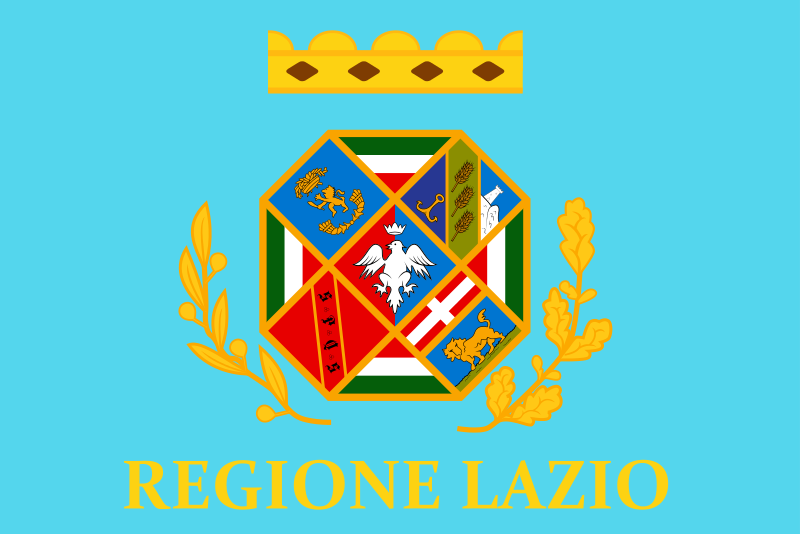 Lazio
Lazio
 Rom
Rom
 Olympische Sommerspiele
Olympische Sommerspiele
 Olympische Sommerspiele 1960
Olympische Sommerspiele 1960
 Seidenstraße
Seidenstraße

 Von den Römern gegründete Städte
Von den Römern gegründete Städte
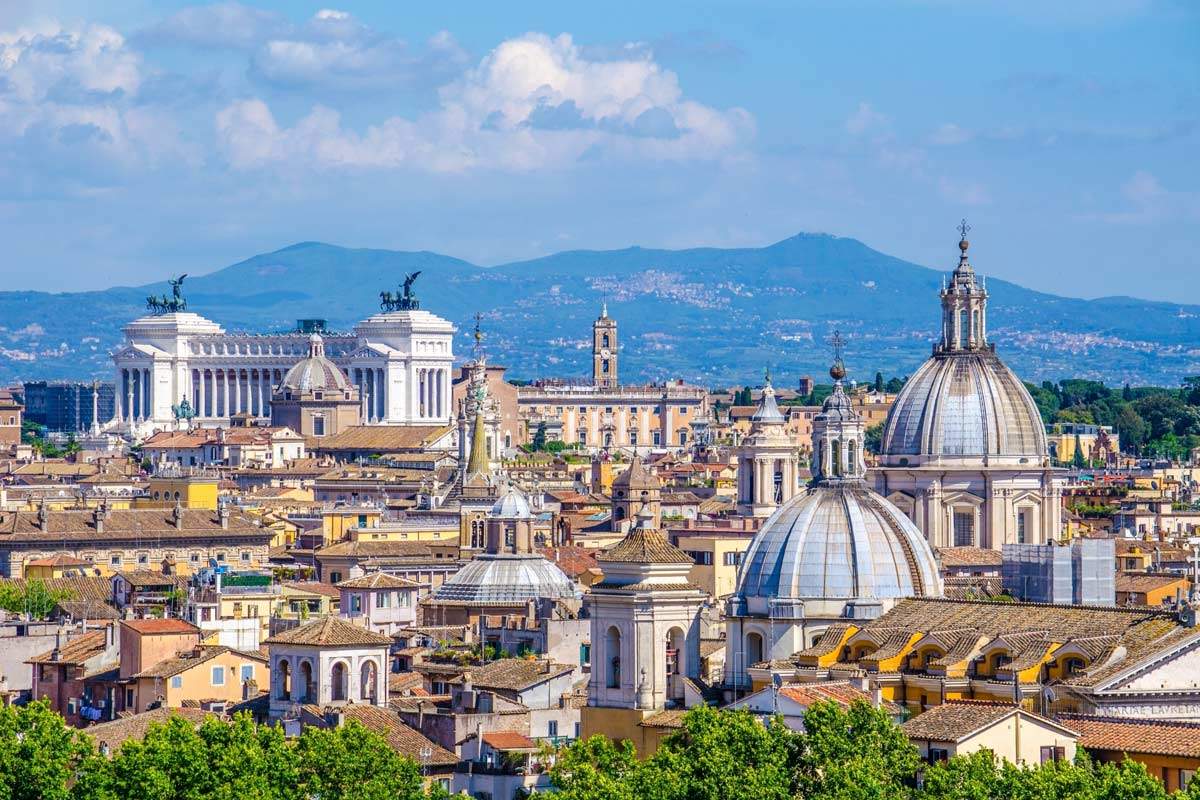
Rom (lateinisch Rōma; italienisch Roma [ˈroːma]), amtlich Roma Capitale, ist die Hauptstadt Italiens.[2] Mit etwa drei Millionen Einwohnern im Stadtgebiet bzw. rund vier Millionen Einwohnern in der Agglomeration ist sie die größte Stadt Italiens. Rom liegt in der Region Latium an den Ufern des Flusses Tiber.
Rom wurde erstmals im 1. Jahrhundert v. Chr. vom Dichter Tibull[3] Ewige Stadt genannt. Diese Bezeichnung, ursprünglich eine Antonomasie, wurde zu einem Ehrennamen für die Stadt wegen der Bedeutung in ihrer bis heute drei Jahrtausende umspannenden Geschichte.
Sie ist heute Verwaltungssitz der Region Latium und der Metropolitanstadt Rom, bis 2015 Provinz Rom. Innerhalb der Stadt bildet der unabhängige Staat der Vatikanstadt eine Enklave. Der Vatikan ist der Sitz des Papstes, das heißt des Bischofs von Rom und Oberhaupts der römisch-katholischen Kirche sowie des Heiligen Stuhls. Zudem ist Rom seit 1834 Sitz des Malteser-Ritterordens, der ein eigenständiges (jedoch nichtstaatliches) Völkerrechtssubjekt ist, sowie der UNO-Unterorganisationen FAO, IFAD und WFP.
Rom ist außerordentlich reich an bedeutenden Bauten und Museen und Ziel zahlreicher Touristen. Die Altstadt von Rom, der Petersdom und die Vatikanstadt wurden von der UNESCO im Jahr 1980 zum Weltkulturerbe erklärt.[4]
In einer Rangliste der Städte nach ihrer Lebensqualität belegte Rom im Jahre 2018 den 57. Platz unter 231 untersuchten Städten weltweit.[5]
罗马(意大利语:Roma)是意大利首都及全国政治、经济、文化和交通中心,是世界著名的历史文化名城,古罗马文明的发祥地,因建城历史悠久并保存大量古迹而被昵称为“永恒之城”[1][2]。其位于意大利半岛中西部,台伯河下游平原地的七座小山丘上,市中心面积有1200多平方公里。罗马同时是全世界天主教会的中枢,拥有700多座教堂与修道院、7所天主教大学,市内的梵蒂冈城是罗马主教即天主教会教宗及圣座的驻地。罗马与佛罗伦萨同为意大利文艺复兴中心[3],现今仍保存有相当丰富的文艺复兴与巴洛克风貌;1980年,罗马的历史城区被列为世界文化遗产[4]。
ローマ(伊: Roma、羅: Roma)は、イタリアの首都。欧州有数の世界都市であり、ラツィオ州の州都、ローマ県のコムーネの一つで、ローマ県の県都でもある。英語とフランス語の表記は「Rome」。
イタリアの首都で政治、経済、文化の中心地である。当市に囲まれるようにローマ教皇の居住するバチカン市国があり、そこは全世界のカトリック教徒にとっての中心地で、現在は外国であるが歴史・宗教・文化的にはローマ市地域と密接な関わりがある。そして昔のローマの大国さを表した「ローマは一日にして成らず」という諺もある。また、領土を持たないマルタ騎士団の本部、マルタ宮殿がコンドッティ通り68にあり、治外法権が認められている。
2014年現在の人口は約286万人で、イタリアで最も人口が多い都市である。2010年の都市的地域の人口では271万人であり、世界128位である[4]。 かつてのローマ帝国の首都であったため西洋文明圏を代表する都市のひとつであり、カトリック教会の中枢であり、そしてまたその美しさから『永遠の都』と称される。
2014年、アメリカのシンクタンクが公表したビジネス、人材、文化、政治などを対象とした総合的な世界都市ランキングにおいて、世界第32位の都市と評価されており、イタリアの都市では第1位であった[5]。
観光都市としての側面もあり、2012年には7,800,000人の観光客が訪れた[6]。後述の「観光」、「聖地として」も参照。
Rome (Italian: Roma  i[ˈroːma]; Latin: Roma [ˈroːma]) is the capital city of Italy and a special comune (named Comune di Roma Capitale). Rome also serves as the capital of the Lazio region. With 2,872,800 residents in 1,285 km2 (496.1 sq mi),[1] it is also the country's most populated comune. It is the fourth-most populous city in the European Union by population within city limits. It is the centre of the Metropolitan City of Rome, which has a population of 4.3 million residents.[2] Rome is located in the central-western portion of the Italian Peninsula, within Lazio (Latium), along the shores of the Tiber. The Vatican City is an independent country inside the city boundaries of Rome, the only existing example of a country within a city: for this reason Rome has been often defined as capital of two states.[3][4]
i[ˈroːma]; Latin: Roma [ˈroːma]) is the capital city of Italy and a special comune (named Comune di Roma Capitale). Rome also serves as the capital of the Lazio region. With 2,872,800 residents in 1,285 km2 (496.1 sq mi),[1] it is also the country's most populated comune. It is the fourth-most populous city in the European Union by population within city limits. It is the centre of the Metropolitan City of Rome, which has a population of 4.3 million residents.[2] Rome is located in the central-western portion of the Italian Peninsula, within Lazio (Latium), along the shores of the Tiber. The Vatican City is an independent country inside the city boundaries of Rome, the only existing example of a country within a city: for this reason Rome has been often defined as capital of two states.[3][4]
Rome's history spans 28 centuries. While Roman mythology dates the founding of Rome at around 753 BC, the site has been inhabited for much longer, making it one of the oldest continuously occupied sites in Europe.[5] The city's early population originated from a mix of Latins, Etruscans, and Sabines. Eventually, the city successively became the capital of the Roman Kingdom, the Roman Republic and the Roman Empire, and is regarded as the birthplace of Western civilisation and by some as the first ever metropolis.[6] It was first called The Eternal City (Latin: Urbs Aeterna; Italian: La Città Eterna) by the Roman poet Tibullus in the 1st century BC, and the expression was also taken up by Ovid, Virgil, and Livy.[7][8] Rome is also called the "Caput Mundi" (Capital of the World). After the fall of the Western Empire, which marked the beginning of the Middle Ages, Rome slowly fell under the political control of the Papacy, which had settled in the city since the 1st century AD, until in the 8th century it became the capital of the Papal States, which lasted until 1870. Beginning with the Renaissance, almost all the popes since Nicholas V (1447–1455) pursued over four hundred years a coherent architectural and urban programme aimed at making the city the artistic and cultural centre of the world.[9] In this way, Rome became first one of the major centres of the Italian Renaissance,[10] and then the birthplace of both the Baroque style and Neoclassicism. Famous artists, painters, sculptors and architects made Rome the centre of their activity, creating masterpieces throughout the city. In 1871, Rome became the capital of the Kingdom of Italy, which, in 1946, became the Italian Republic.
Rome has the status of a global city.[11][12][13] In 2016, Rome ranked as the 14th-most-visited city in the world, 3rd most visited in the European Union, and the most popular tourist attraction in Italy.[14] Its historic centre is listed by UNESCO as a World Heritage Site.[15] Monuments and museums such as the Vatican Museums and the Colosseum are among the world's most visited tourist destinations with both locations receiving millions of tourists a year, and the city hosted the 1960 Summer Olympics. Rome is the seat of several specialized agencies of the United Nations, such as the Food and Agriculture Organization (FAO), the World Food Programme (WFP) and the International Fund for Agricultural Development (IFAD). The city hosts the headquarters of many international business companies, such as Eni, Enel, TIM, Leonardo S.p.A., and national and international banks such as Unicredit and BNL. Its business district, called EUR, is the base of many companies involved in the oil industry, the pharmaceutical industry, and financial services. Rome is also an important fashion and design centre thanks to renowned international brands centered in the city. Rome's Cinecittà Studios have been the set of many Academy Award–winning movies.
Roma (AFI: /ˈroma/[5], pronuncia[?·info]) è la capitale della Repubblica Italiana, nonché capoluogo dell'omonima città metropolitana e della regione Lazio. La città è dotata di un ordinamento amministrativo speciale, denominato Roma Capitale, disciplinato da una legge dello Stato.[6]
Con 2 869 322 abitanti è il comune più popoloso d'Italia e il quarto dell'Unione europea,[3] mentre con 1 287,36 km² è il comune più esteso d'Italia e la quinta città più estesa d'Europa dopo Mosca, Istanbul, Londra e San Pietroburgo. È inoltre la città europea con la maggiore superficie di aree verdi[7].
Fondata secondo la tradizione il 21 aprile del 753 a.C. (sebbene scavi recenti nel Lapis Niger farebbero risalire la fondazione a 2 secoli prima[8][9]), nel corso dei suoi tre millenni di storia è stata la prima metropoli dell'umanità,[10] cuore pulsante di una delle più importanti civiltà antiche, che influenzò la società, la cultura, la lingua, la letteratura, l'arte, l'architettura, la filosofia, la religione, il diritto e i costumi dei secoli successivi. Luogo di origine della lingua latina, fu capitale dell'Impero romano che estendeva il suo dominio su tutto il bacino del Mediterraneo e gran parte dell'Europa, dello Stato Pontificio, sottoposto al potere temporale dei papi e del Regno d'Italia (dal 1871 al 1946). Per antonomasia, è definita l'Urbe, Caput Mundi e Città eterna.
Il suo centro storico, delimitato dal perimetro delle mura aureliane, sovrapposizione di testimonianze di quasi tre millenni è espressione del patrimonio storico, artistico e culturale del mondo occidentale europeo[11] e, nel 1980, insieme alle proprietà extraterritoriali della Santa Sede nella città, è stato inserito nella lista dei Patrimoni dell'umanità dell'UNESCO, provvedimento esteso nel 1990 ai territori compresi all'interno delle mura gianicolensi, edificate per volere di papa Urbano VIII.[12][13]
Roma, cuore della cristianità cattolica, è l'unica città al mondo ad ospitare al proprio interno un intero Stato, l'enclave della Città del Vaticano:[14] per tale motivo è spesso definita capitale di due Stati.[15][16]
Rome (en italien : Roma, prononcé [ˈroˑma]) est la capitale de l'Italie depuis 1871. Située au centre-ouest de la péninsule Italienne, près de la mer Tyrrhénienne, elle est également la capitale de la région du Latium, et fut celle de l'Empire romain durant 357 ans. En 2016, elle compte 2 877 215 habitants établis sur 1 285 km2, ce qui fait d'elle la commune la plus peuplée d'Italie et la troisième plus étendue d'Europe après Moscou et Londres1. Son aire urbaine recense 4 356 403 habitants en 20162,3. Elle présente en outre la particularité de contenir un État enclavé dans son territoire : la cité-État du Vatican (Stato della Città del Vaticano), dont le pape est le souverain. C'est le seul exemple existant d'un État à l'intérieur d'une ville.
L'histoire de Rome s'étend sur plus de vingt-huit siècles, depuis sa fondation mythique par Romulus en 753 av. J.-C. jusqu'à son rôle actuel de capitale de la république italienne. Second berceau de la civilisation occidentale après Athènes, la ville fut successivement le centre de la monarchie romaine, de la république romaine (509 av. J.-C. – 27 av. J.-C.), puis de l'Empire romain (27 av. J.-C. – 330). Durant cette période, où nait la célèbre expression proverbiale « tous les chemins mènent à Rome », la ville aurait compté entre un et deux millions d'habitants et domine l'Europe, l'Afrique du Nord et le Moyen-Orient tant militairement que culturellement, diffusant dans ces territoires la langue latine, ses arts et techniques ainsi que la religion chrétienne. Depuis le Ier siècle elle abrite le siège de l'Église catholique romaine, au sein des États pontificaux (752-1870) puis de la Cité du Vatican.
Considérablement agrandie par de grands travaux sous Jules César et surtout sous Auguste, la ville est partiellement détruite lors du Grand incendie de Rome - le Circus Maximus notamment. À partir du XVe siècle, presque tous les papes depuis Nicolas V (1447-1455) perpétuent la tradition de l'architecture romaine et ambitionnent de faire de Rome le principal centre culturel et artistique de l'Occident. La ville devient l'un des foyers de la Renaissance italienne, avec Florence et Venise, et donne naissance au style baroque - dont témoigne encore son centre historique, classé par l'UNESCO comme site du patrimoine mondial4. Des artistes comme Michel-Ange, Raphaël ou Le Bernin s'y installent et produisent des œuvres telles que la basilique Saint-Pierre, la chapelle Sixtine, la fontaine de Trevi, le Capitole ou les Chambres de Raphaël. Au XIXe siècle, Rome est le symbole de l'unité italienne et devient la capitale du Royaume d'Italie, puis de la République après la Seconde Guerre mondiale.
Ville globale, Rome est la troisième destination touristique la plus visitée d'Europe derrière Londres et Paris5. La Ville Éternelle est l'une des plus belles villes du monde, et fréquentée par les touristes depuis le XVIIIe siècle. Le siège de la papauté et le pèlerinage de Rome en font un lieu éminent pour les chrétiens du monde entier depuis des siècles. Les musées du Vatican et le Colisée sont parmi les sites les plus fréquentés. Rome est aussi l'un des plus grands sites archéologiques du monde, et compte également de nombreux ponts et fontaines, 900 églises, ainsi qu'un grand nombre de musées et d'universités. Outre le tourisme, l'économie de la « Ville Éternelle » est également orientée vers les nouvelles technologies, les médias et les télécommunications depuis les années 2000. Bâtie sur sept collines, la ville se situe près de l'embouchure du Tibre et est divisée en vingt-deux rioni. Rome a aussi organisé les Jeux olympiques d'été en 1960. Rome n'est jumelée qu'avec une seule autre ville, Paris, ce qui est vrai dans l'autre sens, avec ce slogan : « Seul Paris est digne de Rome, seule Rome est digne de Paris ».
Roma es una ciudad italiana de 2 877 215 habitantes,23 capital de la región del Lacio y de Italia. Es el municipio más poblado de Italia y es la cuarta ciudad más poblada de la Unión Europea.4 Por antonomasia se la conoce desde fines de la Antigüedad como la Urbe. También es llamada "La Ciudad Eterna" (en italiano: Città Eterna).
En el transcurso de su historia, que abarca tres milenios, llegó a extender sus dominios sobre toda la cuenca del Mediterráneo y gran parte de Europa. Como capital del Imperio romano, se constituyó en una de las primeras grandes metrópolis de la humanidad, centro de una de las civilizaciones antiguas más importantes. Influyó en la sociedad, la cultura, la lengua, la literatura, el arte, la arquitectura, la filosofía, la religión, el derecho y la moral de los siglos sucesivos.
Es la ciudad con la más alta concentración de bienes históricos y arquitectónicos del mundo;5 su centro histórico delimitado por el perímetro que marcan las murallas aurelianas, superposición de huellas de tres milenios, es la expresión del patrimonio histórico, artístico y cultural del mundo occidental europeo.6 En 1980, junto a las propiedades extraterritoriales de la Santa Sede que se encuentran en la ciudad y la Basílica de San Pablo Extramuros, fue incluida en la lista del Patrimonio de la Humanidad de la Unesco.78
Roma es el corazón geográfico de la religión católica y destino de peregrinación (vías romeas) y también la única ciudad del mundo que tiene en su interior un Estado extranjero: el enclave de la Ciudad del Vaticano, que se encuentra bajo el poder temporal del papa.9 Por tal motivo se le ha conocido también como la capital de dos Estados.
Рим (итал. Roma [ˈroːma]) — столица и крупнейший город Италии. Административный центр области Лацио и провинции Рим. Расположен на реке Тибр.
Рим — один из старейших городов мира, древняя столица Римской империи. Ещё в Античности (III век н. э.) Рим стали часто называть Вечным (лат. Roma Aeterna). Одним из первых так назвал Рим римский поэт Альбий Тибулл (I век до н. э.) в своей второй элегии. Представления о «вечности» Рима во многом сохранились и после падения древнеримской цивилизации, принеся соответствующий эпитет в современные языки.
Также Рим называют «городом на семи холмах». Первоначально поселения располагались на холме Палатине, впоследствии были заселены соседние холмы: Капитолий и Квиринал. Несколько позже поселения появились на последних четырёх холмах (Целие, Авентине, Эсквилине и Виминале).